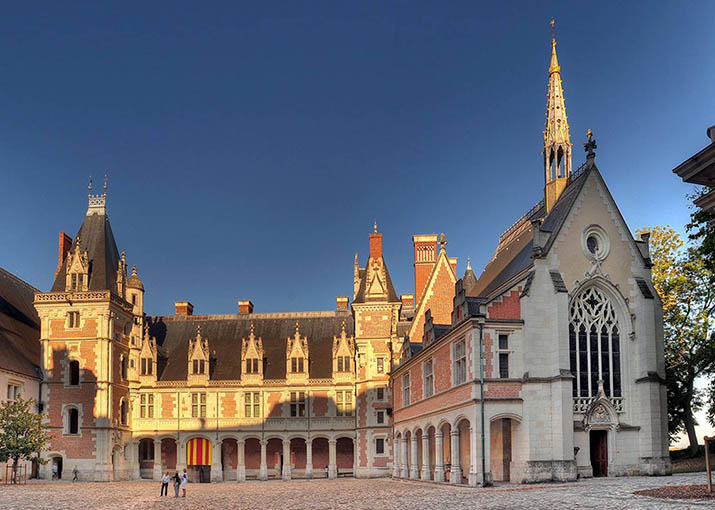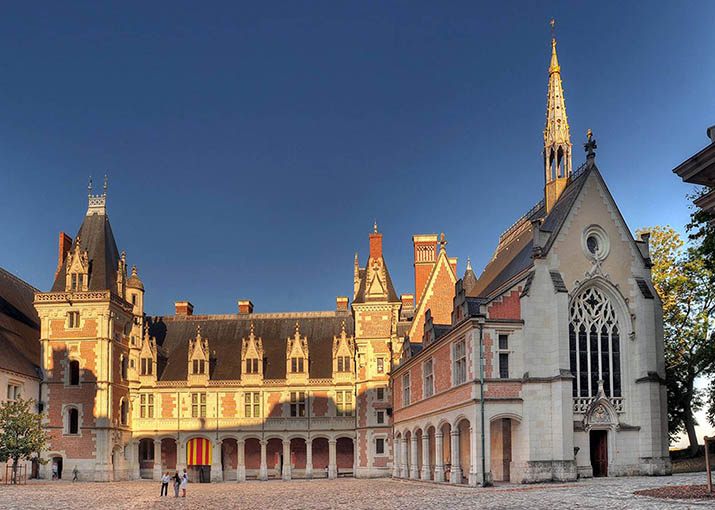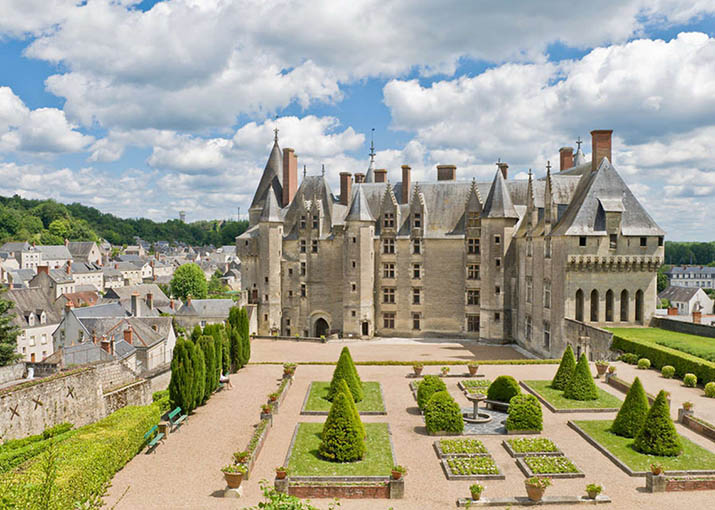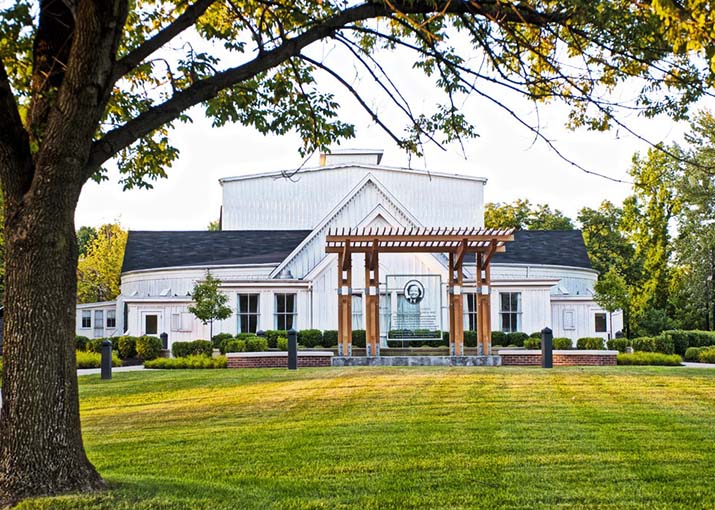Visiting the castles of the Loire Valley is like taking a journey back in time through the history of France. For enthusiasts of heritage and the art of living, this trip is truly fulfilling! Personally, I’ve been there countless times, whether with friends or family. It’s impossible to visit all the castles in a single trip! There are hundreds in total, located in the Centre-Val de Loire and Pays de la Loire regions. I’ll focus on the main ones, situated in Loir-et-Cher and Indre-et-Loire. Let’s embark on a journey following in the footsteps of François I, Catherine de’ Medici, and Leonardo da Vinci…
Which castles of the Loire to visit?
This is the trickiest part! There are dozens and dozens (if we only count the main ones), mostly located from Blois to Tours. It’s better to avoid trying to see too many because otherwise, you won’t fully enjoy the visits. Ideally, visit two castles per day, or a maximum of three. Remember that strolling through the gardens often takes as much time as touring the castles themselves. Here are the must-see castles of the Loire.
1/ Château de Chenonceau
If there’s only one castle to see, for me it would be Château de Chenonceau. Nicknamed the “Ladies’ Castle” for the women who built and inhabited it, such as Diane de Poitiers and Catherine de’ Medici, it is magnificent with its arch spanning the Cher River. It’s the only bridge castle in the world, which actually saved it several times from destruction, especially during World War II when the Cher River marked the demarcation line between the free zone and the occupied zone.
Special mention also goes to the gardens that extend on both sides of the castle. Walk all the way to the end to take beautiful photos of the castle. If possible (depending on the season and accessibility), cross over to take a walk on the other side of the Cher River.
However, due to its popularity, it’s one of the most visited castles of the Loire! So, it can be crowded, especially during peak tourist seasons. Try to visit in the morning if you’re there during a holiday period. You can book your tickets in advance online. Note: picnicking inside the estate is prohibited. Leave your provisions in the car. For opening hours and days: visit the Château de Chenonceau website. I haven’t had the chance, but it’s a bit of a dream of mine… to take a hot air balloon ride over Château de Chenonceau!
2/ Château de Chambord
Built at the behest of King François I, Château de Chambord embodies sheer grandeur in every aspect. With a total of 426 rooms, it stands as the largest of the Loire Valley castles. Its vast park, originally a hunting reserve, is also the largest enclosed forest park in Europe, covering an area similar to that of Paris. The façade, adorned with hundreds of intricately sculpted chimneys and capitals, is nothing short of spectacular.
Inside the castle, the most famous feature is the double helix staircase, where two people can ascend without ever crossing paths. Over 80 rooms are open for visitors to explore.
You can purchase a skip-the-line ticket to avoid queues upon arrival. From April to October, visitors can also enjoy horse and bird of prey shows. A great tip: entry is free for individuals under 26 years old (EU nationals).
To extend your visit and admire the castle early in the morning or late in the day, you can stay overnight at the Relais de Chambord.
3/ Château de Blois
Visiting the Royal Château de Blois means discovering, in one place, a broad panorama of French architectural history, from medieval and Gothic styles to Renaissance and classical influences. Successive kings who inhabited it have left their mark, with King François I’s famous open spiral staircase being a highlight.
This is a visit where you should take your time (plan for at least two hours). I highly recommend getting the audio guide at the entrance, as it provides a wealth of insights into French history and royal court intrigues. Allow enough time to also visit the Fine Arts Museum of Blois, housed in the Louis XII wing, showcasing works by masters such as Ingres, Rubens, and Boucher. From April to September, a sound and light show takes place every evening at dusk in the castle courtyard.
If you’re visiting the Loire Valley castles with children, I suggest also visiting the Maison de la Magie, located just across from Château de Blois.

4/ Château de Cheverny
Although less architecturally grand compared to its neighbors, Château de Cheverny boasts the most beautiful interior and furnishings. Its claim to fame includes inspiring Hergé to create the fictional Château de Moulinsart in the beloved Tintin comic series. Visitors can explore an exhibition dedicated to comics.
5/ Château de Chaumont-sur-Loire
The Château de Chaumont-sur-Loire is a must-visit for contemporary art enthusiasts. It hosts a rich cultural program as a Center for Arts and Nature. When visiting the castle, park, and outbuildings, you’ll encounter numerous artworks, some permanent and others temporary. You can check the schedule of artistic events on the Chaumont-sur-Loire website.
Every year, from mid-April to early November, the gardens of Chaumont-sur-Loire host the International Garden Festival. Unlike the “French-style gardens” found at other castles, this exhibition showcases contemporary artistic landscape creations. It’s truly astonishing and worth exploring! You can book your skip-the-line ticket online.
6/ Château d’Amboise and Clos Lucé
Located in the heart of Amboise, perched on a promontory, the Château d’Amboise overlooks the town and offers magnificent views of the Loire Valley. With its numerous terraced gardens, there are plenty of different viewpoints of the surroundings. A highlight is the tomb of Leonardo da Vinci, who lived in Amboise and is buried in the Saint-Hubert Chapel.
If you have time, I recommend visiting the nearby Château du Clos Lucé, where Leonardo da Vinci spent the last three years of his life. You can purchase a combined ticket for Château d’Amboise + Clos Lucé.
7/ Château d’Azay-le-Rideau
Built on an island in the middle of the Indre River, the Château d’Azay-le-Rideau is a true jewel of pure Renaissance style. With its reflecting moat, it is one of the most photogenic castles of the Loire Valley. Honoré de Balzac, a native of Tours, described it as “a diamond set in the Indre.”
The interior is beautifully furnished, particularly with public collections. You can observe the different ways of living in a castle over the centuries, from sparsely furnished rooms of the 16th century when the court was itinerant, to the refined interiors of the mid-19th century with rich art and furniture collections.
8/ Château de Villandry

Built around 1536, Villandry is the last of the great Renaissance châteaux built along the Loire River. It was purchased in 1906 by a wealthy Spaniard, Joachim Carvallo, who transformed the gardens into what they are today, among the most beautiful in Europe. Their reputation has spread worldwide, almost overshadowing the castle itself. I visited in early April, which was a bit early to fully appreciate the gardens’ beauty. I recommend visiting later in spring when everything is in full bloom, or in late summer with numerous blooms starting in early September.
Inside the castle, you’ll find an extensive collection of Spanish paintings from the 16th to the 18th centuries, notably displayed in the first-floor gallery.
9/ Royal Fortress of Chinon
Perched on a rocky spur above the Vienne River, the Royal Fortress of Chinon is part of the Loire Valley châteaux but belongs to an earlier period. It’s a medieval fortress whose thousand-year-old walls witnessed the presence of Henry II of England, Eleanor of Aquitaine, King Charles VII, and Joan of Arc.
From the fortress’s heights, the view over Chinon and the surroundings is sublime. Before or after your visit, head to the opposite side of the Vienne for a beautiful viewpoint of the fortress.
10/ Château d’Ussé
Along the banks of the Indre River, Château d’Ussé is a true fairy-tale castle. It is famously known as the “Sleeping Beauty Castle” as it inspired Charles Perrault’s tale. An exhibition space on the ramparts allows visitors to relive the story of Princess Aurora, the fairy Carabosse, and the charming prince… Rates and opening days are available on the Château d’Ussé website.
How to Get Around to Visit the Loire Valley Châteaux?
To visit the Loire Valley châteaux, having a car is highly recommended. If you don’t have one, renting a car is advisable. You can compare prices on Auto-Europe, Sixt, or BSP-Auto.
Alternatively, you can arrive by train at Blois, Amboise, or Tours. For châteaux located outside these cities, there are bus and shuttle services available. You can search for transport options on the Rémi network website for the Centre-Val de Loire region. From Blois, a châteaux shuttle allows you to visit Chambord or Cheverny.
Another option is to explore the Loire Valley châteaux by bike: a dedicated cycling route connects the various châteaux. It’s a journey I would love to take next time!
Exploring the châteaux of the Loire Valley is not just a journey through history and architectural splendor but also a dive into the cultural richness and natural beauty of France. Each castle tells its own tale, from royal intrigues to artistic innovations, offering visitors a glimpse into the past while marveling at the timeless elegance of their surroundings.
Whether you choose to wander through the meticulously manicured gardens of Villandry, admire the grandeur of Chambord’s double helix staircase, or immerse yourself in the fairy-tale ambiance of Ussé, the Loire Valley châteaux promise unforgettable experiences at every turn.
So, whether you travel by car, train, or bicycle, embark on your own adventure and discover why the Loire Valley châteaux continue to captivate hearts and minds around the world. Indulge in the charm, history, and sheer beauty that define this enchanting region of France.


